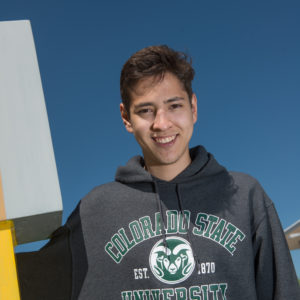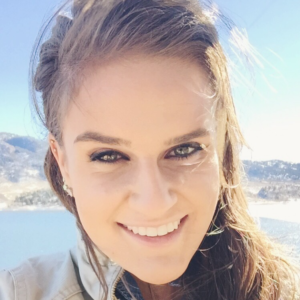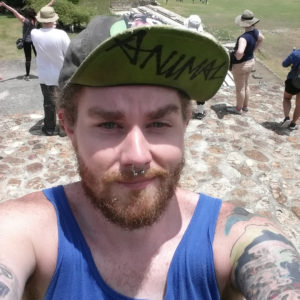Research opportunities at CSU include the chance to take part in a bioblitz, where researchers and students identify all living things in a 24-hour timeframe at a national park.
Nearly 5,000 undergraduates at Colorado State University are engaged in faculty-led research in any given year. We consistently outpace similar universities and colleges on that statistic, according to Mark Brown, assistant professor in the Department of Clinical Sciences and director of the Office for Undergraduate Research and Artistry.
Most faculty want undergraduates — and specifically first-year students— to get involved in research, too. “Freshmen might think they are too new or inexperienced to be helpful in labs or in research, but that couldn’t be further from the truth,” Brown said. “Most faculty are excited to have a freshman enter their research group, so it’s never too early to start.”
Undergraduates who are involved in research typically have higher academic performance, higher rates of retention, higher rates of entry into graduate and professional schools, and are more successful as first-year employees.
Here, we profile three undergraduates who are pursuing research at CSU, and campus experts offer tips on how to become involved in reseach.
Luis Gomez Wulschner
Fluency in Spanish and English sparked curiosity about effects of bilingualism on brain function – and his interest in a research career.
Major: Neuroscience
College of Veterinary Medicine and Biomedical Sciences and College of Natural Sciences
Hometown: Boulder, Colorado
Activities and accomplishments:
- Born and lived as a child in Mexico City, Mexico
- Intern in the CSU Brainwaves Research Laboratory
- Earned College Honors for poster presentation, “Basic Word Processing and Recognition in Bilingual and Monolingual Individuals,” Celebrate Undergraduate Research and Creativity Showcase 2016
“I’m really grateful to have gotten involved in research as a freshman. It’s such a great experience – you learn from it, you grow from it, and it’s a team effort.”

Kelly Davis
Interest in research was sparked through conversations with professors, both in class and during office hours. Aspires to attend medical school.
Major: Biological Science
College of Natural Sciences
Hometown: Fort Wayne, Indiana
Activities and accomplishments:
- Honors Program Peer Mentor and Team Leader
- Medical Scribe at Poudre Valley Hospital and Medical Center of the Rockies
- Worked in Professor Andrew Norton’s lab, College of Agricultural Sciences
- Poster presentation: “Do native and introduced plants invest differently in their young and old leaves?” Celebrate Undergraduate Research and Creativity Showcase 2016
“Getting involved in research early in my undergraduate career has given me a better idea of the intensive amount of work that goes into a project and has better prepared me for future projects.”

Jesse Bain
Inspired as an adult learner with an interest in history to become involved in research and to study archaeology.
Major: Anthropology with a concentration in Archaeology
College of Liberal Arts
Hometown: Virginia Beach, Virginia
Activities and accomplishments:
- Honors student
- Tau Sigma National Honor Society member
- Phi Theta Kappa, John Blair Liberal Arts, and Students First scholarships and recipient of the Amanda Jones Field Study Abroad Award
- Works full-time while attending classes at CSU
“Participating in the Rio Bravo Archaeological Survey in an unexplored, tropical rainforest in northern Belize allowed me to see that there are still many amazing discoveries to be made about past civilizations. Investigating Mayan ruins was the opportunity of a lifetime.”

For undergraduates interested in research:
- Get to know your professors. Ask them questions about what they do for their research. “All of us have research programs, and we are excited about inviting young, eager students into our labs,” said Kate Huyvaert, associate professor in the Department of Fish, Wildlife Conservation and Biology in the Warner College of Natural Resources.
- Off-the-beaten-path research opportunities include spending time at the Mountain Campus or at the Todos Santos Center in Mexico.
- Undergraduates can also get involved in research through clubs. “Students meet researchers, strike up a conversation and suddenly they have an internship or an Honors project,” Huyvaert said. CSU STEM Educators Club and the Biomedical Engineering Society are two options through the College of Engineering. In the College and Health and Human Sciences, student organizations include the Food Science and Technology Club, Emerging Green Builders or the Nutrition and Fitness Club. Check out other clubs at CSU through RamLink.
- The Honors Program, which includes nearly 400 freshmen, is a primary route to learn more about research. You’ll create an Honors thesis and can work on original research with a faculty advisor. Continuing and transfer students can participate in the Honors Program, said Director Don Mykles, who is also a professor of biology. Email Mykles or Diane Burton, assistant director, to learn more.
- The Office for Undergraduate Research and Artistry hosts an annual research poster competition, Celebrate Undergraduate Research and Creativity, and sponsors the Journal of Undergraduate Research and Scholarly Excellence to publish research findings, with full peer review and editing (calling all English majors!). “These programs are available to students to really help them learn about the research process, whether it’s conducting research themselves or publishing in a low-stakes environment,” said Mary Swanson, associate director of the Office for Undergraduate Research and Artistry. “Students can present their research in an environment that is friendly, and it is much less intimidating than giving a talk or presenting at a national conference.” For more information, make an appointment with an Undergraduate Research Advisor through the Office for Undergraduate Research and Artistry.
- MURALS, the Multicultural Undergraduate Research Art and Leadership Symposium, provides mentoring and opportunities for students of color to present research in creative writing, visual or performing art, science, social science and the humanities. Graduate students provide feedback and faculty serve as mentors for the symposium, which takes place in late March or early April each year.
The undergraduate research experience can help CSU students define their interests and career pathways.
“We know that students are better positioned for careers beyond this university when their academic interactions have taken them outside of the classroom and into laboratories, fields and studies,” said Ken Barbarick, associate dean for academic programs who also teaches Introductory Soil Science in the College of Agricultural Sciences, a class that lets students test and identify soil samples in his laboratory. “I don’t think that students can be fully prepared for careers in agriculture without getting their hands dirty, even if that is a cliché.”